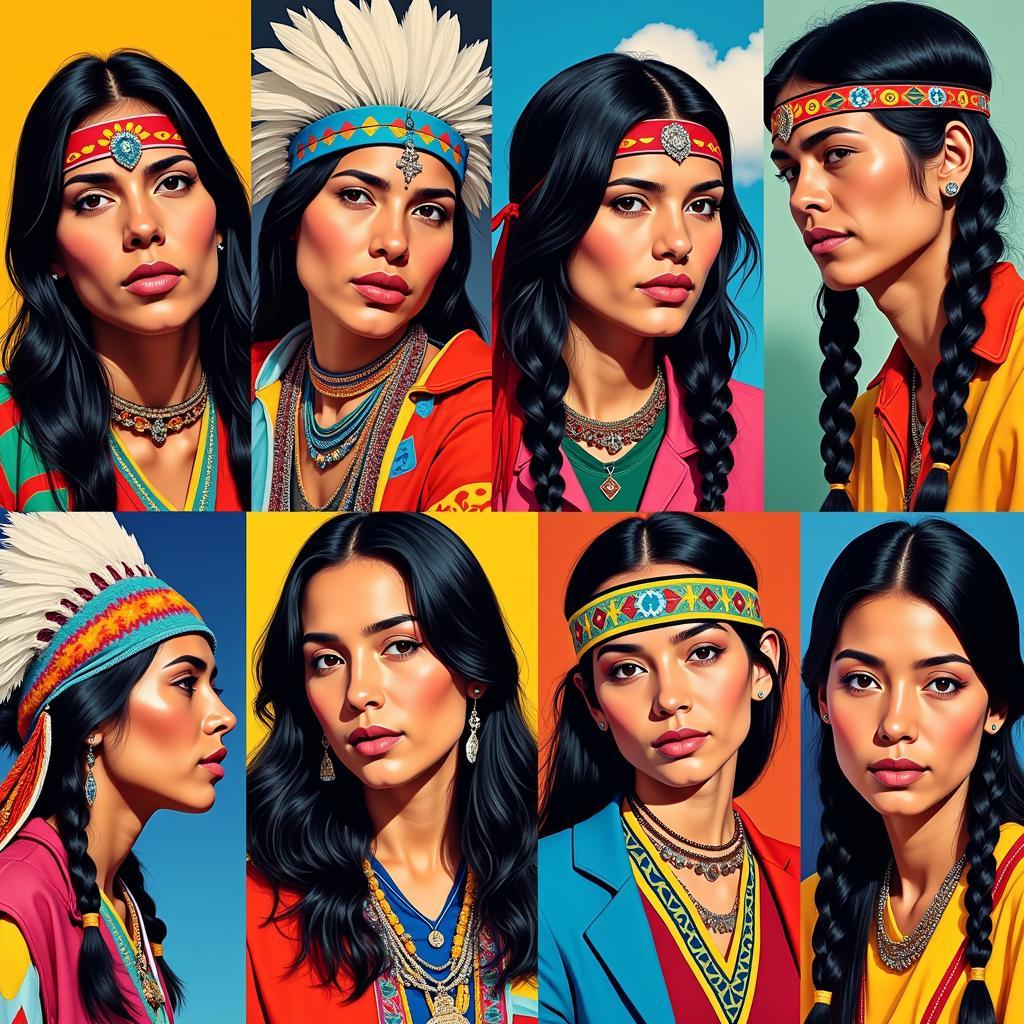Exploring the Vibrant World of Fritz Scholder Art
Fritz Scholder Art stands as a powerful testament to the evolving landscape of Native American representation in the 20th century. His bold and often controversial work challenged stereotypical portrayals, forging a new path for Indigenous artists and sparking crucial conversations about identity, heritage, and the complexities of modern life. Scholder’s unique blend of Abstract Expressionism and Pop Art, infused with his own Luiseño heritage, captivated the art world and continues to resonate with audiences today.
Delving into the Life and Legacy of Fritz Scholder
Born in 1937, Fritz Scholder’s mixed heritage—Luiseño, German, French, and English—significantly shaped his artistic vision. Growing up during a time of evolving social dynamics, he witnessed firsthand the struggles faced by Native Americans in a society grappling with its own historical baggage. This experience became a central theme in his artwork, driving him to explore the nuances of identity and challenge the romanticized images of Indigenous peoples that dominated the art world. His early exposure to art, through his father’s work as an educator on Indian reservations, further solidified his passion and set him on the path to becoming a groundbreaking artist.
Scholder’s formal training at the University of Kansas and the Institute of American Indian Arts in Santa Fe provided him with a strong foundation in various artistic techniques. However, it was his decision to break away from traditional depictions of Native Americans that truly distinguished him. He boldly incorporated elements of Abstract Expressionism and Pop Art into his work, creating a vibrant and often unsettling portrayal of contemporary Indigenous life. He painted Indians in everyday settings, often incorporating elements of modern life such as cars and televisions, juxtaposing them with traditional imagery.
 Fritz Scholder Indian Portraits in Pop Art Style
Fritz Scholder Indian Portraits in Pop Art Style
Understanding Fritz Scholder’s Artistic Style
Fritz Scholder’s art is characterized by its striking use of color, bold lines, and a raw emotional intensity. His paintings often feature a limited palette, with deep reds, blacks, and earth tones dominating the canvas. He wasn’t afraid to experiment with different mediums, including lithography and printmaking, further expanding his artistic reach and exploring the possibilities of each form. This experimentation allowed him to diversify his expression and connect with wider audiences.
His departure from traditional representations of Native Americans sometimes drew criticism, yet it was this very audacity that made his work so impactful. He painted Indians as they were, not as they were imagined to be, challenging the prevailing narrative and forcing viewers to confront the realities of contemporary Indigenous life. He painted them in everyday situations, reflecting the complexities of their lives and challenging the stereotypical images that had long dominated the art world.
The Enduring Impact of Fritz Scholder’s Work
Fritz Scholder’s impact on the art world and Native American representation is undeniable. He paved the way for a generation of Indigenous artists to embrace their heritage while challenging conventional artistic norms. He inspired countless artists to break free from the constraints of tradition and explore new ways of expressing their cultural identity.
His work continues to spark dialogue and inspire reflection on issues of identity, heritage, and the complexities of modern life. Museums and galleries around the world proudly display his paintings, ensuring that his legacy continues to enrich and challenge audiences for generations to come. His art remains relevant today, reminding us of the importance of challenging stereotypes and embracing the multifaceted nature of cultural identity.
Conclusion: The Ongoing Dialogue of Fritz Scholder Art
Fritz Scholder’s art continues to provoke thought and inspire dialogue. His groundbreaking approach to representing Native American identity has left an enduring legacy, challenging perceptions and paving the way for a new era of artistic expression. His work reminds us of the power of art to confront social issues, celebrate cultural heritage, and spark meaningful conversations about the complexities of our shared human experience.
FAQ
- What tribe was Fritz Scholder from? He was of Luiseño descent.
- What is Fritz Scholder best known for? His bold and often controversial portraits of Native Americans.
- What art movement is Fritz Scholder associated with? While he incorporated elements of Abstract Expressionism and Pop Art, his work defied easy categorization.
- Where can I see Fritz Scholder’s art? His work is featured in numerous museums and galleries worldwide.
- What is the significance of Fritz Scholder’s art? He challenged stereotypical representations of Native Americans and paved the way for a new generation of Indigenous artists.
- Did Fritz Scholder only paint Native Americans? While his most recognized works feature Native American subjects, he also explored other themes and subjects.
- How did Fritz Scholder challenge traditional Native American art? He incorporated modern elements and broke away from romanticized depictions.
Need support? Contact us 24/7: Phone: 02462573573, Email: [email protected] Or visit us at: Savico Megamall, 7-9 Đ. Nguyễn Văn Linh, Gia Thụy, Long Biên, Hà Nội 10000, Việt Nam.


